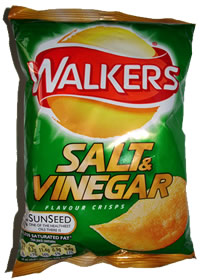What if an RFP was an Open Day?
We recently completed writing a response to an RFP. It weighed in at just under 100 pages with almost 34,000 words. OK, so there was a lot of copying and pasting going on, but that is not an insignificant amount of effort. Multiply that by the number of suppliers who were invited to respond; add the time taken for the client to produce the RFP itself, then review responses and answer questions and it is clear that RFPs consumes a lot of everybody’s time. With the winner taking all, that is a lot of wasted effort. But hold! That is only the first stage! The list of suppliers is whittled down and a beauty parade follows. Yet more effort is spent by two or three vendors turning their word document into a bunch of PowerPoint slides. A favoured supplier is identified and a process of negotiation follows, based upon estimates and what little information the supplier knows. Finally the supplier is selected, inevitably their are surprises on both sides when the engagement starts.
So the RFP process is a standard (but inefficient) way of doing business. What if it was done a different way?
One of the more significant decisions you make in your life (if you have children) is where you will send them to school. It is not a decision you make lightly as it will have a major influence on how your child grows up in the world. In the UK the government provides data (league tables) but this can only tell you so much; there is more to education that the statistics tell (which are historical and do not necessarily reflect the current reality your child is going to face). You will probably ask around – seek the wisdom of the crowd. Undoubtedly the community can identify good schools and bad schools. But the best judge of a school is to go there, to look around, to meet the teachers, to see the children. Do you trust the leadership of the head? Would you be happy for this person to teach your child, would you like your child to play in this playground, (and more importantly) grow up with these children?
So why not apply this thinking when looking for a supplier to build you an application? At the end of the day, projects succeed on personalities and relationships. Will the vendor get on with the buyer? The RFP tells you little about that. What if the RFP process was like seeking a school for your child? What if you had a project open day where you welcomed suppliers in, got to meet them, and maybe even got them to compete against each other.
What if you had three intense days when the business, IT and prospective invited suppliers come together to define the project and complete against each other in teams to come up with the “best” solution.
What if you provide the suppliers with details of what you are looking to achieve and request a basic qualifier – company details, profitability etc (the stuff that goes on every RFP) and a list of clients they have built similar products for (not exceeding one page of A4 per client). And for costings you ask them to provide you with their proposed rate card.
What if you then invite all suppliers to a large venue with a space for everyone to gather, and break out areas for the individual suppliers to work in. You start with background and presentations from the business and from IT. You tell the story of what you want, the vision, a description of the current technology, constraints, assumptions, known risks, integration points, etc. You provide some initial direction as a large group, but then breakout into supplier teams, interspersing each team with your people – from IT and the business. You provide technology (access to your systems, whatever is needed) and domain expertise. What happens next is up to the suppliers. They then have two days to impress.
What if at the end of each day each supplier presents their output to the whole group. The following morning you outline what you like of the outputs and ask the teams to take that as input to work on. Then at the end of the last day each vendor puts in an anonymous sealed envelope with their estimate (resources required to build the application). Can this triangulation technique be any less accurate than the estimate given on the back of several pages specification in an RPP?
If we accept that IT projects are about people, implemented by people, then the benefit of this approach is that you get to work with the supplier and experience the relationship first hand, rather than through documents and practiced PowerPoint presentations. And for the supplier it reduces the time taken to respond and will be more enjoyable for those involved. After all, don’t people prefer to do rather than write about what they do?



